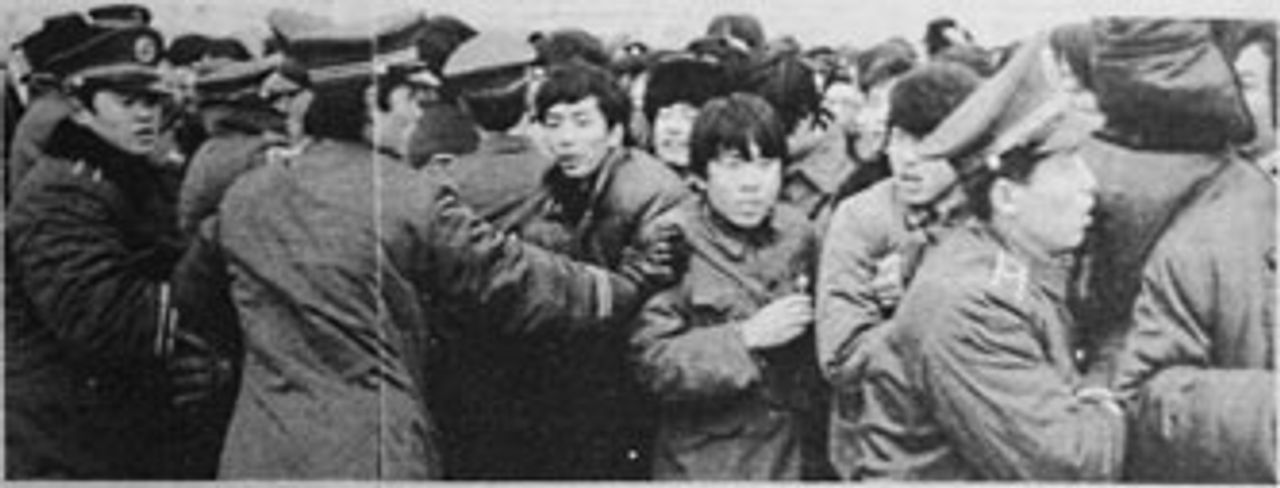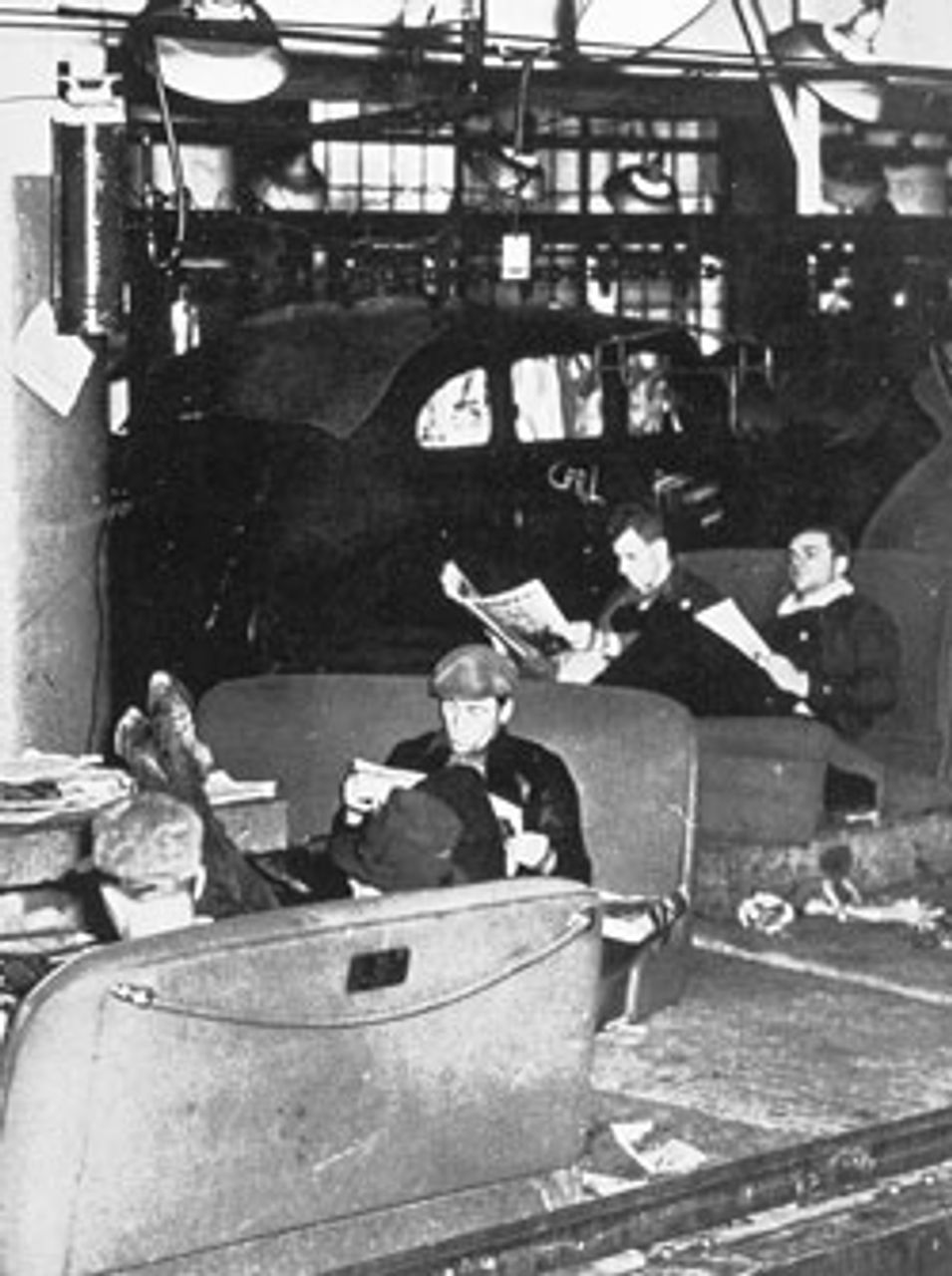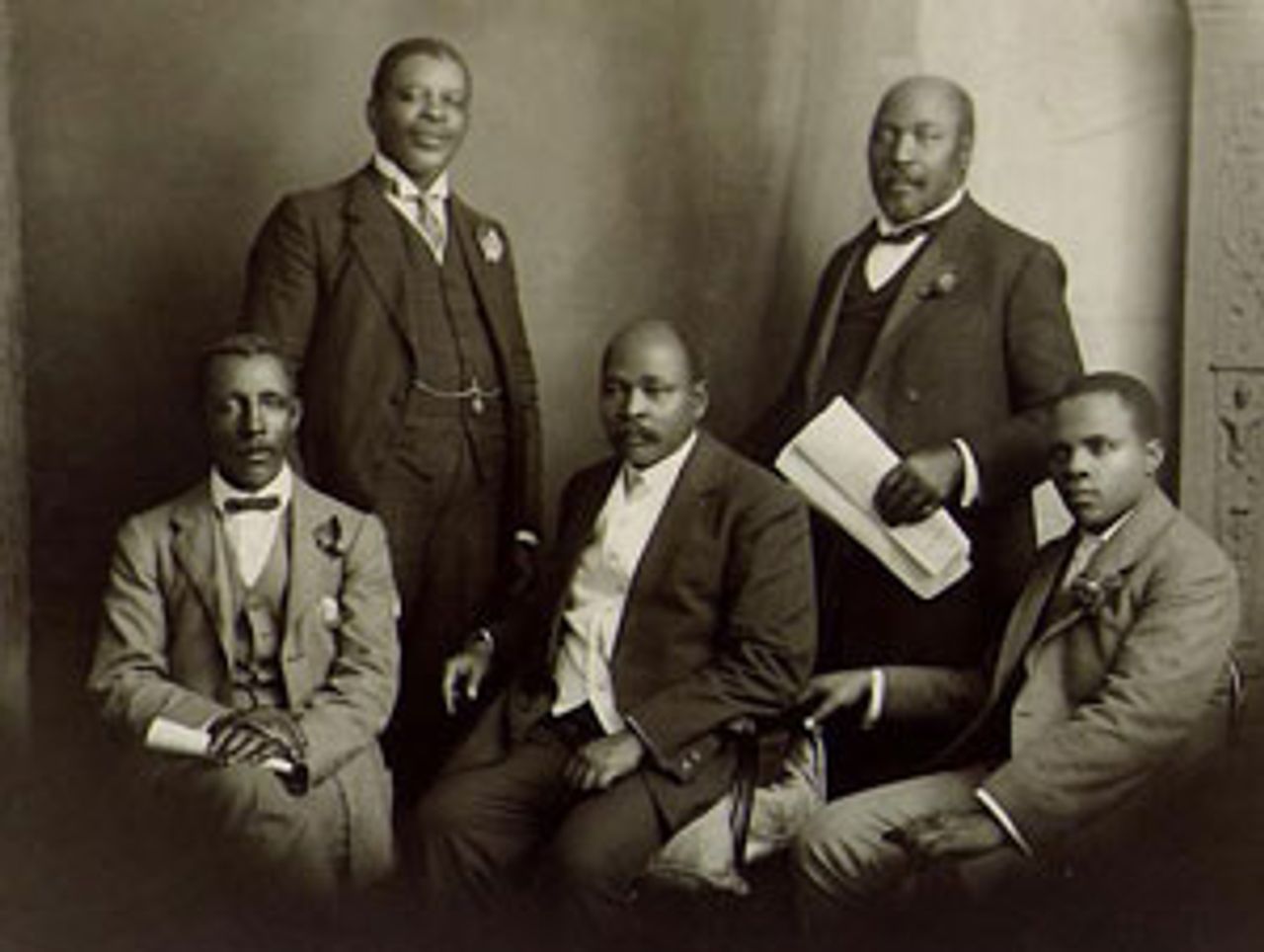This Week in History provides brief synopses of important historical events whose anniversaries fall this week.
25 Years Ago | 50 Years Ago | 75 Years Ago | 100 Years Ago
25 years ago: Student protests throw Chinese Stalinist regime into crisis
 Student protest in Beijing on New Years Day, 1987
Student protest in Beijing on New Years Day, 1987On December 31, 1986, the official New China News Agency charged that the growing student protests centered in Shanghai were inspired by secret agents from the anti-communist Kuomingtang government of Taiwan.
The protests started at the University of Science and Technology in Hefei on December 9. In Shanghai during the week of December 22 there were daily demonstrations of tens of thousands. Smaller protests sprang up in cities throughout China, including Beijing and Wuhan.
In response, the regime, headed by Deng Xiaoping, enacted a law on December 26 requiring all demonstrations to be registered with the police at least five days in advance, with the route details, the number of participants, and the names, addresses and professions of the organizers. Only two days later the law was defied by a march that attracted 3,000 protesters in Beijing. Demonstrators marched in subzero temperatures, chanting slogans for liberty and democracy and carrying signs demanding freedom of the press.
The Deng regime feared that the student protests would draw in the workers, who three years earlier had walked out in unprecedented numbers across China, including 20,000 who went out on strike at China’s largest tractor factory, located in Luoyong, 500 miles southwest of Beijing. The December 31 press release claimed that a Shanghai factory worker had distributed leaflets inciting students to “struggle against the Communist Party” and urging followers to steal guns and ammunition for a future uprising.
The city government in Beijing alleged that a scheduled New Year’s day protest at Tiananmen Square was to be the “fuse to explode the whole country” and overthrow the government. These charges against the student movement reflected a growing crisis within the Chinese Stalinist regime. Less than three weeks later, on January 16, the resignation of the general secretary of the Chinese Communist Party, Hu Yaobang, would be announced on national television.
50 years ago: Dutch agree to negotiate with Indonesia over New Guinea
On January 2, 1962, Dutch Prime Minister Jan Eduard de Quay told parliament the Netherlands was prepared to negotiate with Indonesia over the fate of Dutch New Guinea. The move by the Dutch, who had hoped to set up a puppet state in their last major colony, came after repeated threats from Indonesia, which claimed the 151,000-square mile area it called West Irian as part of its sovereign territory.
Earlier, on December 19, 1961, President Sukarno ordered Indonesian airspace closed and mobilized 500,000 soldiers to press Jakarta’s claim to the western part of the island shared with Australian-administered East New Guinea (subsequently called Papua New Guinea). No invasion came, but Sukarno continued to posture as if war were imminent. When a grenade exploded near his motorcade on January 7, killing three and injuring 28, Sukarno blamed the Dutch. Within days he again threatened war, issuing a ten-day deadline for negotiations on January 9.
The Dutch had recently seen another old imperial country, Portugal, routed out of its last Indian possession, Goa, after having received little international support. Prior to this, the Netherlands had insisted that any negotiations over the future of the colony could proceed only with the stipulation that the island hold a referendum. The Dutch felt they could apply sufficient pressure in such a vote to achieve a favorable outcome.
The Jakarta regime was motivated in part by a desire to divert mounting internal opposition along nationalist channels and direct it against foreign powers. The Indonesian working class and sections of the peasantry were organized in the world’s largest communist party (the PKI) outside of the USSR and China. Workers had launched a massive occupation movement in 1957, which had been defused to the benefit of US and British corporations with the vital assistance of the PKI. The Stalinist party insisted that “[a]ll the actions of the workers, of the peasants and the organisations of youth are directed against the Dutch capitalists. The other capitalist countries did not take a hostile attitude in the conflict between Holland and Indonesia in West Irian. That is why no action will be engaged against the enterprise of the capitalists of other countries.”
75 years ago: US sit-down strikes spread
 Inside the Fisher Body plant during the sit-
Inside the Fisher Body plant during the sit-down strike in 1937
At a meeting called by the United Auto Workers (UAW) in Flint, Michigan on January 2, 1937, local union representatives established a Board of Strategy. The board was given authorization to call a general strike at all General Motors plants should GM management continue to refuse to recognize the UAW and negotiate wage rates and a national contract with the union.
The London Times reported how the delegates cheered wildly when John L. Lewis, president of the United Mine Workers of America and leader of the Congress of Industrial Organisations (CIO), addressed the gathering. Lewis told delegates the CIO, representing ten trade unions and an aggregate membership of some one million workers, had pledged its financial and moral support to the UAW and its members.
The Board of Strategy drew up a document on the “conditions of settlement” of the sit-down strike against GM, which had begun on December 30. The document demanded the abolition of piecework, the establishment of a 30 hour week, a scale of minimum wages, the reinstatement of those dismissed for trade union activities, an agreement to base seniority on length of service, recognition of the UAW, and the creation of a joint board of workers and employers to set speed schedules for production.
The sheriff of the county conferred with CIO reps during the meeting but declined to serve them the injunction issued days earlier by a federal judge. The court order forbade picketing or interference with GM business and called for an immediate return to work by the strikers. “I couldn’t do it,” the sheriff told the press. “There was too many folks around.”
After the seasonal holiday, GM’s Delco Remy car components factories in Anderson, Indiana failed to reopen because the workers came out on strike. This added 9,000 workers to the 35,000 already on strike. By January 7, 21 of GM’s plants had been closed by striking workers. GM’s Chevrolet Motor Company announced that all of its operations in Flint and its iron foundry and small parts plant in Saginaw and Bay City, Michigan would cease production because of the strike.
On January 4, GM answered the UAW’s demands. Management posted up in all of its plants and bought newspaper space for an official notice stating that GM “will not recognize any one trade union as a sole bargaining agency for its workers to the exclusion of all others.” The notice went on to define the “real issue” as whether “a labor organization [will] run the plants of GM or will management continue to do so?” The notice was signed by the president of GM, Alfred P. Sloan, Jr.
100 years ago: Forerunner of the African National Congress founded
 South African Native National Congress
South African Native National CongressOn January 8, 1912, the South African Native National Congress (SANNC), the forerunner of the African National Congress (ANC), was founded at a meeting in Bloemfontein. The delegates were tribal chiefs, representatives of several political associations that claimed to represent black South Africans, and church figures.
Pixley Seme, a young black nationalist, had issued a call the previous year for political tendencies to “forget all the past differences among Africans and unite in one national organisation.” Under the South Africa Act of 1909, voting rights for black South Africans were limited to those living in the Cape. They tended to be better educated and wealthier than the mass of blacks. The vast majority of black South Africans lived in abject poverty and were entirely politically disenfranchised. The SANNC’s aim was not to make a broad appeal, but rather to overcome the obstacles to the integration of the black middle classes tribal chiefs into the political establishment.
The SANNC’s bourgeois character was reflected in the biographies of its leading figures. John Dube, the SANNC’s first president, was a reverend, writer, publisher, newspaper editor and politician. He had studied at college in the US. His family was of a chiefly background. His father was one of the first South African blacks ordained a pastor.
Dube was absent from the founding meeting, but he sent a letter to the “Chiefs and Gentlemen of the South African Native National Council” calling for “patience,” “reasonableness” and “law-abiding methods.” Having warned of the “dangers within” (i.e., the possibility of a more radical tendency emerging), Dube concluded: “We have been distinguished by the world as a race of born gentlemen… and by the gentleness of our manners… and the nobility of our character we shall break down the adamantine wall of colour prejudice and force even our enemies to be our admirers and friends.”
The SANNC was transformed into the African National Congress (ANC) in 1923.
